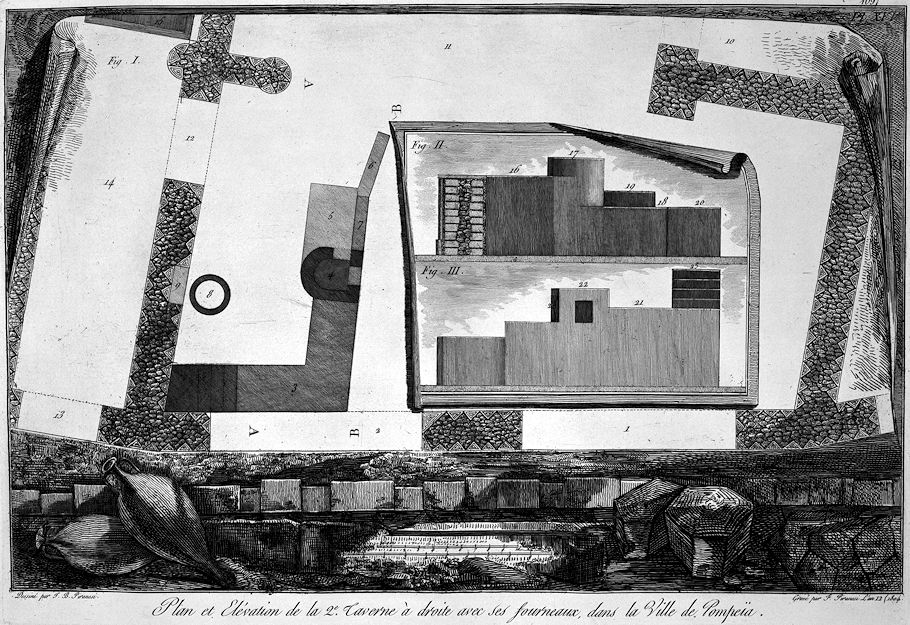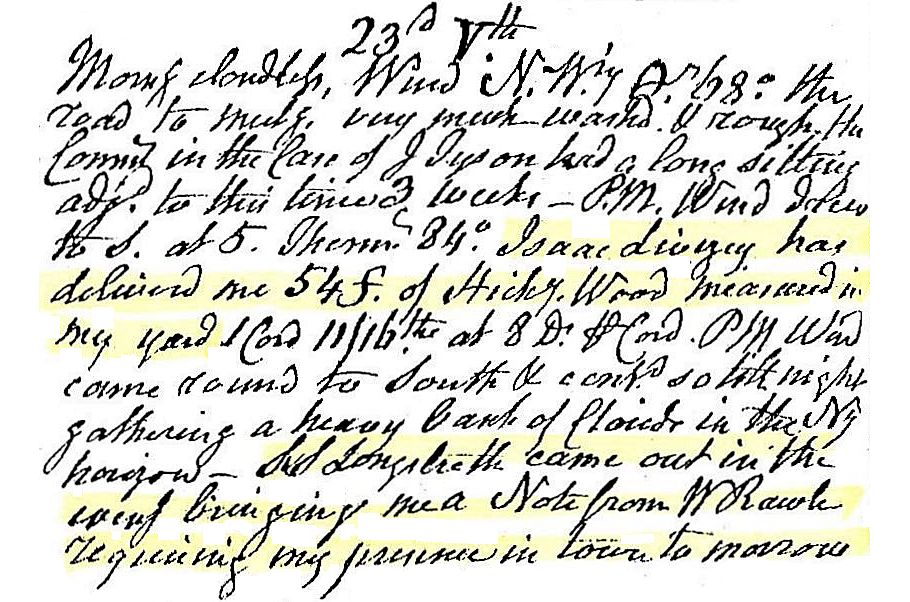23 July 1778 Thursday
. . . . . .
Artifacts of the Bianconi vs Piranesi 'Circus of Caracalla' affair 1772-1789
Giovanni Lodovico Bianconi's "Elogio Storico del Cavaliere Giovanni Battista Piranesi Celebre Antiquario ed Incisore de Roma" (1779)
paragraph two
This singular man was born, according to what he [Piranesi] said, from a shoemaker in Venice in 1721. He wanted to be an architect, and he took the first rudiments from a certain Scalfaroto, unknown to us Romans, but who must have been a man of some merit, if the praise that Piranesi gave him is right. He was just eighteen years old when he determined to come to the source of the fine arts, that is, to great Rome, where he studied perspective under the Valerians, theatrical painters then in vogue. Piranesi's rapid progress did not leave the masters much to do, because soon they no longer found themselves in a position to keep up with him. He fell in love all of a sudden with the art of copper engraving, and went to learn it from Cavalier Vasi, a Sicilian domiciled in Rome, and here he also made great strides. To give evidence of his studies he engraved various perspectives, and for acquire a valid Maecenas dedicated to I don't know what rich mason, who, not caring about these honors, did not reward him at all; so he was soon abandoned by his client. Piranesi later realizing that the engraving of these labors of his was not very plausible, his natural suspicion led him to believe that this originated from Vasi, who out of jealousy was hiding from him the true secret of giving strong water. Enraged, therefore, one day he wanted to kill the teacher who placated him with good manners, but freed his school as soon as he could from such a dangerous disciple, thanking God very much. Piranesi then left with his branches in a very bad mood, and returned to Venice to stop there to work as an architect. This second attempt did not succeed him better than the first, because he received no commission; therefore he confined himself to selling his prospects as best he could, to collect money and return to Rome to try a new road. Here he joined the famous engraver Polenzani Venetian, brought to Rome shortly before I don't know by whom only to engrave certain geographical maps, although he had marvelous dispositions for any other part of the fine arts. In the meantime, Polenzani had been tempted to study the figure, and with him he also began to study Piranesi, who, improbably drawing almost all night, only slept a few hours on a miserable straw sack, which was perhaps the best piece of furniture he had at home. In this state Piranesi lived for some time in the greatest anguish, but instead of studying the nude, and the most beautiful statues of Greece that we have here, and which are the only good way to learn, he began to draw the most ramshackle cripples and hunchbacks, who saw the day for Rome, always a charitable receiver of all that Europe produces most elegantly in this genre. He still loved to draw sprained legs, broken arms, and battered cudrions, and when he found one of these shows in the churches, it seemed to him that he had found a new Apollo of Belvedere, or a Laocoon, and he immediately ran home to draw it. Anyone who has seen this singular collection asserts that it is the healthiest meditation on human misery. When he wanted to raise himself, and give himself almost to the heroic, he drew eating things, such as pieces of meat for slaughter, pig or kid heads; but it must be confessed that he did such things marvelously well. Some of these drawings are kept by the Senator of Rome, Prince Rezzonico, from whose authoritative protection our architect has always drawn great advantage and honor until the last days of his life.
46 y.o. Francesco Piranesi 1804
Le Antichità della Magna Grecia Parte I

Plan and Elevation of the 2nd Tavern on the right with its stoves, in the City of Pompeii.
Drawn by G.B. Piranesi
Engraved by F. Piranesi Year 12 (1804)
23 July 1812 Thursday

Morning cloudless, wind NWerly, temperature 68°. The road to Meeting very much washed and rough. The Consul in the Case of J Tyson had a long sitting adjourned[?] to this time 3 weeks. PM wind drew to S, at 5 therm. 84°. Isaac Livezey has delivered me 54 feet of hickory wood, measured in my yard 1 cord 11/16ths at 8 D. and cord. PM wind came round to south and continued so till night, gathering a heavy bank of clouds in the northerly horizon.
S and S Longstreth came out in the evening bringing me a note from W Rawk requiring my presence in town tomorrow.
23 July 1998
Mars (Martis)
Mars, who, as father of Romulus, was the primogenitor of the Roman people, the god of war, of husbandry, of shepherds, and seers. For him was named the month of Martius, March, the beginning of the Roman year
The Campus Martius (Campo Marzio) is the Roman field named for Mars, the god of war, who, through his son Romulus, initiated the origin of Rome. The Ara Martis, the altar to Mars erected by Romulus, was the first structure within the Campus, and thus signaled the dedication of the Campus to Mars. Additionally, the Equiria, the annual horse-races instituted by Romulus in honor of Mars, were also held within the Campus Martius.
It is precisely the military character of Mars, as well as his status as primogenitor of the Roman people, that Piranesi promulgates throughout the Ichnographia. The large plan contains the Ara Martis in front of a Templum Martis, a second Templum Martis with an Area Martis in front of it, and a designation of the Equiria race course occurs as well.
The Ara Martis, situated within the Campus Martius proper, represents the original altar to Mars, and thus fittingly becomes the centerpiece and focal point of an elaborate circular architectural composition which includes a temple to Mars, a Porticus Praebentes umbraculum diei ab aesti (a porticus providing shade from the heat of the day), and the Domus Alexandri Severi (the imperial residence of Alexander Severus). Furthermore, a large circular pool around the altar of Mars not only sets it apart, but also adds distinction by making it "untouchable" as well. Judging by its surroundings and it pivotal position, Piranesi's delineation of the Ara Martis clearly indicates a very special place.
The second temple of Mars, positioned on the west side of the Tiber at the foot of the Vatican Hill, sits within a hexagonal area labeled Apparatorium Triumphatorum--the place of preparation for the triumphal march. In front of the temple and place of preparation is the decagonal Area Martis, which an euripus (canal/moat) encloses on two sides, and it is here that Piranesi indicates the beginning of the Triumphal Way. Besides the obvious ceremonial importance of the Area Martis, this place is also distinct within the Ichnographia: its ten-sided perimeter is the only such shape throughout the entire large plan. Significant also is the plan of the Templum Martis, whose ichnography resembles male genitalia. The deliberate connection between Mars and overt masculinity is unquestionable. Moreover, the Templum Martis, the Area Martis, and the beginning of the Triumphal Way together establish a principal axis, one of the three major axes present within the Ichnographia. This axis extends from the top of the Vatican Hill straight down to the bank of the Tiber across from the tomb of Augustus, and is not only great in length, but also rich in symbolism. Represented here is the mighty thrust of Mars, the dominance of Romulus, and hence the source of Rome and its unparalleled pride.
Another of the Ichnographia's three major axes is the race course of the Equiria, the annual horse races held in honor of Mars. Piranesi delineates the course as a relatively straight path running the length of the Ichnographia's northern sector, beginning in the south at the Petronia Amnis (which is, however, incorrectly placed within the plan) and ultimately reaching the outskirts of Rome at the plan's edge. With the exception of a few private gardens on a hill overlooking the Equiria, all the structures along the course relate directly to the Equiria or to the military in general. Three long porticos, the Porticus a S.P.Q.R. Amoenitati Dicata, the Porticus Vipsania, and the Porticus Alexandri Severi, line the course, and no doubt are meant to accommodate the spectators of Rome's premier "fest". The buildings and areas related to the military include, the Officinae Balistarium (manufactory of ballista), Officinae Scorpiorum (manufactory of scorpions), the Naumachia Domitiani (a large amphitheater designed for the show of mock naval battles), three Circulus (large circular areas for military drills and exercises, and finally the Officinae Armorum and the Officinae machinarum militarium (manufactories of military arms and machines). Not only do these buildings pay respect to Mars as the god of war, but, as a cohesive group, they essentially constitute Rome's "Department of Defense".
23 July 2000
data filters
I've found that the best defense against "drowning in protoinfo" is to manifest one's own (hopefully triumphant flow of) content -- simply a matter of toggle switching from passive voice to active voice. Drowning becomes less of a danger once you're part of the current.
Ichnographia
..."redraw" the rest of the Ichnographia by my own design. ...envisioned a slapdash design for the theater of Pompey, and then quickly realized that all the plans that are left to be redrawn can be also redesigned (just as Piranesi redesigned; another reenactment), ...adhere only to the labels and locations Piranesi uses. ...the new plans will be crazy designs, yet all the Campo Marzio research data is there to use as inspiration, thus there are a great many reenactments to be performed.
...there can be many reenactments of the redrawing... ...orient the Ichnographia to true north and orient the Philadelphia plan to true north as well. Then overlay the two plans with Hadrian's tomb and Logan circle as the registration point. From there begin considering the implications of both/either plans in 2d and 3d.
Also, Mirage City as a reenactment of Rome Interrotta.
23 July 2001
aesthetic correction
I'm almost finished reading Gerhard Kopf's Piranesi's Dream...
...an excerpt I thought this list might find inducing:
"But even worse was to come. I was accused of reveling in the ugly. What humbug! The theory of the fine arts, the legislation of good taste, the science of aesthetics were already highly developed and thoroughly refined in my time. Only the concept of the ugly, although they touched upon it everywhere, had remained behind. And actually what is ugly exists insofar as what is beautiful does. What is ugly comes into being from and with the beautiful. It is indignant at what is beautiful and likes to form an alliance with what is comical. In Nature what is ugly exists as little as what is beautiful or straight lines do, and it is a mistake to consider disease a cause of what is ugly. The realm of the ugly is much larger than the realm of sensual phenomena in general. Beautiful and ugly are not value opposites, rather at best opposites of stimulation. Concerning anything that is ugly it must be said that the relationship to what is beautiful that is neglected by it is included. Only what is ugly guarantees the aesthetic correction of tradition."
Just think about how true (and perhaps even axiomatic) that last sentence really is.
for the love of email or ...
...Piranesi redux
I was hoping to send an email today to Professor John Wilton-Ely, the long standing Piranesi scholar. I am postponing my letter however, because he is today on his way to spending the rest of the summer at his Tuscany home, and I don't think he has access to email there. The reason for my email is to tell him I received the copy of his 1983 article on Piranesi, and to thank him for sending it to me. Wilton-Ely's package arrived at my house today, and I was surprised that he too finds fault with Tafuri's interpretation of Piranesi's Campo Marzio.
The correspondence between Wilton-Ely and myself began about a month ago. I recently found his webpage and email address through a series of fortuitous events. I took a change and sent him an email asking him if he knew that Piranesi's Ichnographia of the Campo Marzio exists in two printed states. About a week later Wilton-Ely replied by email and said he did not know that the Ichnographia was in two states, and that I appear to have made a remarkable discovery. In a subsequent email I supplied him with the data I have 'published' (via design-l and quondam) so far, and he in turn promised to send me a copy of his 1983 paper. A note Wilton-Ely sent along with the paper said he looked forward to 'continuing things' in September.
As you might well imagine, I'm very pleased with having made such a positive connection, and the reason I'm sharing all this here is because Design-L is one of the few (cyber)places where the "remarkable" Piranesi discovery was first (and immediately!) published. Of course, it can be well argued that cyber publishing lacks peer review, and is therefore not to be altogether trusted, but, then again, cyber publishing, especially via email lists that automatically archive, offers the satisfying aspect of verifiable and timely public record, as well as the invitation for (peer) review.
23 July 2004
Mediterranean travel time ?
I have a specific question regarding sea going travel time.
Does anyone here have an idea as to the (average) length of time it took for a ship to travel from Carthage to today's Naples in July 326 AD?
-----
2004.07.23 12:37
According to Charlesworth:
- from Naples to Selinous: ~36 hours
- from there to Clupea (Qalibiyah): ~60 hours
Pliny is mentioning an exceptional travel in 48 hours from Africa to Rome.
As winds are rather regulars in July, I would say, more or less, 4 days (72 hours) from Carthage to Naples. Anyhow there are 300 nautical miles between these 2 cities and till XIXth century the navigation medium speed was 4 knots i.e. 75 hours.
(Yesterday, I traveled 500 miles from Patras to Ancona in 20 hours)
Christos Nüssli
-----
2004.07.23 12:42
Galley or sails?
A lot of work has been done on Venetian galleys & distances. It was possible, with adequate motivation, to get from the tip of Southern Greece to Venice in a galley in a week.
DW Diana Wright
-----
2004.07.23 13:43
I see in Piganiol's L'Empire chrétien, p. 318, this sentence : "la durée des trajets était très irrégulière, on nous parle de 30 jours pour aller de Marseille à Alexandrie, 5 jours de Narbonne à Carthage". Alas, Piganiol does not give his sources. I think that the journey of 30 days was a coastal shipping one, stopping in each port. For Carthage to Naples, I would say (this is just a conjecture) 3 or 4 days (Carthage-south Sicily, south Sicily-north Sicily or some place in Calabria, Calabria-Naples).
Best.
Pierre-Louis Malosse
23 July 2013
Architectural history: Moorish domes
Interesting quest. I'm no expert, but I'll offer some pointers that may lead to further 'discoveries.'
Arch of Janus Quadrifrons, Rome, c. 315
According to Banister Fletcher, "It has a simple cross-vault with embedded brick box-ribs at the groins, affording a further instance of the progressive character of Roman constructive techniques: such ribs are possibly the prototypes of Gothic ribbed vaults."
The Roman Empire of the early 300s was more Eastern centric than Rome centric, with the emperors having more government centers in Asia Minor and Northern Europe than at Rome. For example, Diocletian (c. 300) ruled from Nicomedia (Izmet, Turkey), and before Constantine founded Constantinople (c. 330), he ruled two decades from Treves (Trier, Germany), having spent only about a total of two months in Rome over the course of 30 years. The point being there was a lot of back and forth between Northern Europe and Asia Minor, bringing about a 'cultural exchange' moving mostly from East to West. The Romanesque style very much grew out of this Eastern influence.
I'd try to do a parallel chronology of Moorish architecture and Romanesque architecture. I think you'll start finding similarities, with the Moorish evolving much quicker into elaborate vaulting and the Romanesque striving toward greater and greater height.
23 July 2020

Mary Boone's 180 hours of community service hours 132 133 134 135 136 137 138
23 July 2023 Sunday
. . . . . .
|